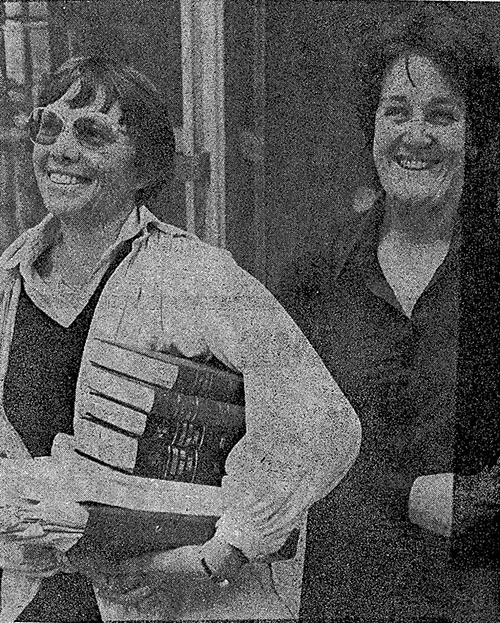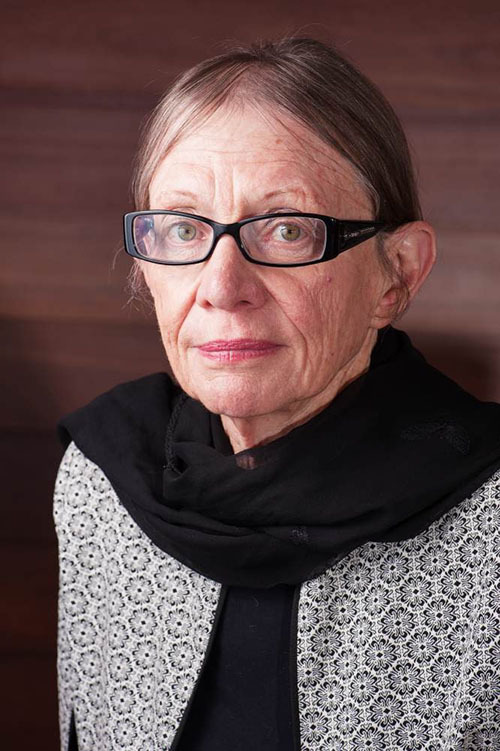- Winter 2024
- Retirement of her Honour Carolyn Chalmers Simpson AO KC
Retirement of her Honour Carolyn Chalmers Simpson AO KC

Reflections of a colleague
On 12 March this year, Carolyn was farewelled on her (final) retirement as a judge of the Supreme Court. At that time – 30 years after she was asked by Gleeson CJ to take her judicial oath – she was, and remains, the third-longest-serving judge in the court’s 200-year history, her tenure falling just short of two renowned chief justices, Sir Alfred Stephen and Sir Leslie Herron.
Her career as a barrister commenced in May 1976, following a ‘stint’ as an English teacher in country New South Wales. In November 1989, a respectable 13 years later, Carolyn was appointed one of Her Majesty Queen Elizabeth II’s Counsel. By that time, she occupied chambers on Ground Floor Wentworth Chambers, with members including Stephen Gageler and Alan Robertson, to name but a few.
That appointment as one of Her Late Majesty’s Counsel was plainly warranted. Roddy (RP) Meagher QC was a friend and admirer of her work at the Bar. He offered his sincere congratulations in terms that only he could: ‘You would have deserved it – even if you had been one of the chaps.’
Carolyn was sworn in as a judge of appeal in June 2015. From 29 March 2018, she continued as an acting judge of appeal until 29 March 2024. At the time of her ‘retirement’ as a permanent judge of appeal, the then Chief Justice, Tom Bathurst, gave a very perceptive and thoughtful account of Carolyn’s character, both as a judge and person. He observed:
Many judges display judicial virtues of independence, impartiality, clarity of thought and expression and legal ability. Few express them all, and to such a degree as your Honour.
As to the person, he referred to her humility and reserve.
Before she was appointed to the Court of Appeal, Carolyn had delivered many judgments as a member of the Court of Criminal Appeal. Those judgments were, and are often, cited and relied on for their clear statements of principle and as examples of its application, and are noteworthy for their insight, clarity and economy of language.
Over time, these judgments contributed to Carolyn’s unsought but well-deserved ‘rockstar’ status in the eyes of trial judges and criminal practitioners, as well as among law students looking for a clear, usually short, and authoritative explanation on a particular subject.
One of many examples is her analysis in R v Fletcher (2005) 156 A Crim R 308 ([33]–[48]) of what is involved in a decision to admit or reject tendency evidence under the Evidence Act 1995 (NSW), s 97(1). In avoiding a question which did not require attention, and illustrating her wry sense of humour, she did ‘no more than note the mysteries of s 101(2)’.

Another is the decision in R v Millwood [2012] NSWCCA 2 (‘Millwood’), which remains unreported. In two sentences, Carolyn captures the essence of a personal circumstance to be considered in the exercise of the sentencing discretion. Millwood was a Crown appeal against allegedly inadequate sentences. There was an issue as to whether the sentencing judge’s assessment of Millwood’s ‘moral culpability’ was overly sympathetic. At [69], Simpson J rejected the Crown’s argument:
I am not prepared to accept that an offender who has the start in life that the respondent had bears equal moral responsibility with one who has had what might be termed a ‘normal’ or ‘advantaged’ upbringing. Common sense and common humanity dictate that such a person will have fewer emotional resources to guide his (or her) behavioural decisions.
This statement reveals much about the writer, her strength of character, and her deep and broad understanding of the human condition. Millwood captures the essence of a circumstance which may mitigate a sentence, and its correctness was confirmed by the High Court in Bugmy v The Queen (2013) 249 CLR 571, [37], which acknowledged Simpson J’s identification of the underlying significance of ‘social disadvantage’, albeit by that court’s adoption of her earlier statements in Kennedy v R [2010] NSWCCA 260: at [50]–[53].
Carolyn’s sense of humour, although not always apparent and sometimes mischievous, has obviously accompanied her through most of her life. In July 1992, she delivered a paper at a conference at the University of Sydney on the subject, ‘Women’s judgments: Can they make a difference?’ Treating that topic as asking whether women judges could improve on what their male counterparts were doing (described as ‘improving the cricket team’), Carolyn concluded at the outset of the paper that, having given that question ‘anxious consideration’, she was driven to answer ‘no’. The paper then purported to demonstrate why that was so by identifying several considerations that compelled that answer.
One was that ‘women tend to be distracted by side-issues and are unable to focus on the true question’. In other words, they might be said to ‘lack a sense of proportion’. To test that proposition, Carolyn gave as an example a decision of a male judge sitting in the Melbourne County Court and delivered only a few years prior. She first described the facts of the case:
In Melbourne, in 1988, an academic held his wife captive for three days, chained her to a bed, locked the door, nailed up the windows, and subjected her to a series of indignities, physical violence, and had sexual intercourse with her while she was chained to the bed. The judge sentenced him to a 3-year good behaviour bond.
Carolyn asked ‘Why?’ and then proceeded to record the judge’s answer (to that otherwise rhetorical question):
Demonstrating that necessary concentration on the true issues, the judge said that he – the perpetrator – was a person of learning and standing in the community. The prospect of him doing it again was minimal.

The last of the five considerations was that ‘women are too sensitive’. As illustrating the dispassionate sensibility of a male judge, Carolyn referred to an aspect of the outcome of a murder trial in the Sheffield Crown Court. At the close of the proceeding, a request was made by the prosecution that the gun used by the wife to kill her husband be destroyed. Mr Justice Boreham refused that application, reasoning that he hated to destroy things like guns when it was not necessary, especially when the weapon was a ‘nice little folding 0.410’. For those not familiar with that weapon, it is a small calibre folding or break-action shotgun well suited to small game hunting and pest control. It was first produced in 1874. Carolyn observed of the judge:
He had a much better idea. The couple – husband dead and wife in gaol – had a teenage son, Bruce. ‘The gun is a great treasure,’ said the judge, ‘and should in time be handed over to Bruce. It should give him a great deal of pleasure.’
She added (some might say unnecessarily) that ‘you cannot help but feel that a woman judge might have taken a different view. In that event, the bereaved son might have been deprived of a charming little family heirloom out of misplaced sensibility’.
As Tom Bathurst also noted in March 2018, and as continued to be the case, as an appellate judge Carolyn maintained with ease the balance between independence of thought and collegiality, and at the same time brought to that task her intellectual rigour and principled approach to the resolution of cases, which raised questions she may not previously have encountered. Describing Carolyn as ‘definite in her views’, he emphasised that she was never obstinate and always open to discussion.
Speaking for myself, it was a privilege to be a member of the Court of Appeal during the whole of Carolyn’s time on that court.
Finally, a footnote: In her early practice as a barrister, Carolyn acted with notable success in proceedings before the New South Wales Anti-Discrimination Board for a client, Mrs Harrison, who was a teacher at Bankstown Technical College. In fact, they were the first proceedings heard and decided in that tribunal. The photograph reproduced above was taken in June 1979. As is apparent, it shows Carolyn leaving the hearing with her ‘victorious’ client close behind. As a judge, Carolyn had many associates and tipstaves. Some have gone on to have distinguished careers in the law, including in the field of defamation. One can only wonder whether this photograph, perhaps recalled years later, provided inspiration for a now-common modus operandi of some counsel to be photographed when leading high-profile clients in to or out of court.
